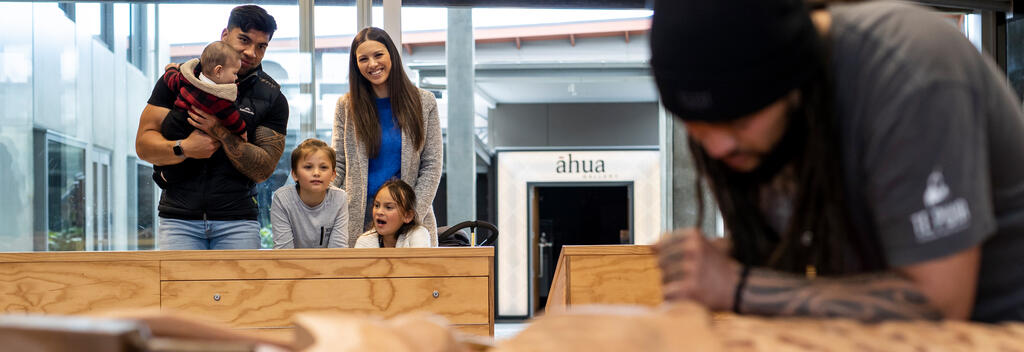-
Popular places to visit
Popular things to do
Helpful tips
Here's a few useful links to help with planning your trip to Aotearoa New Zealand.
-

Māori carvings in wood, bone, or stone have unique designs and special meanings.


Carvings are rich in symbolism and use common patterns, though styles differ between tribes.
Symbols include the tiki, which represents the human figure, and the manaia, a creature with a bird-like head and serpent-like body, associated with guardianship.
Traditional patterns used in carving were often inspired by the natural environment, including spider webs (pūngāwerewere), fish scales (unaunahi) and the unfurling fronds of the fern (koru).
Kaiwhakairo (carvers) apply their craft to various materials.
Wood carving has played an important and respected role in Maori culture since before the first people arrived in New Zealand aboard their fleet of ocean-going waka (canoes).
Whakairo rakau (wood carving) focuses on using a range of native timbers, particularly wood from the majestic giants of the forest, the kauri and totara. The trees used for wood carving represent Tāne Mahuta, the god of the forest.
Each carving tells a story and records a piece of history.
Wood-carvers used tools made from greenstone, which was prized for its strength.
Pounamu from the South Island was also precious for its beauty, so became a popular material for carving adornments.
Precious adornments were (and are still) worn as a sign of prestige; they included ear pendants, breast pendants and carved combs worn in the hair.
Pounamu is still a popular choice for jewellery today.
As well as pounamu, carvers also shaped adornments from whale ivory and whalebone.
Bone was also carved into fish hooks.


Traditional carving continues to thrive today. Just as tā moko or traditional Māori tattoos, have seen a renaissance, wood carving continues to have major spiritual and cultural significance, and is still widely used for whare whakairo (communal meeting houses).
These experiences offer the chance to come up close and personal with some stunning Māori carvings